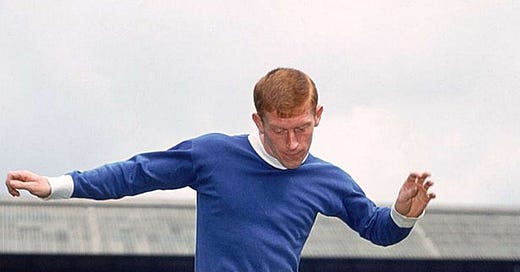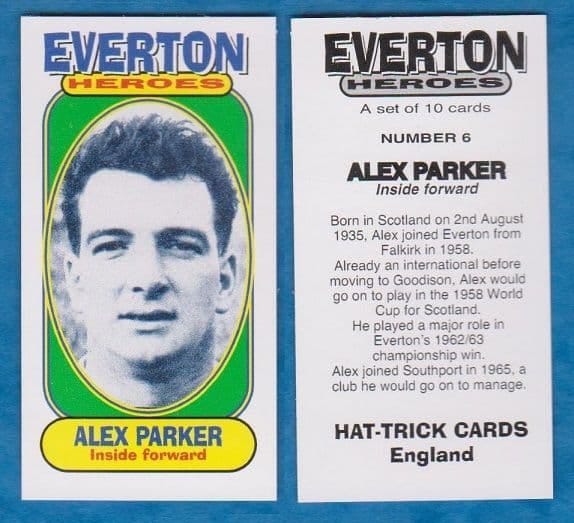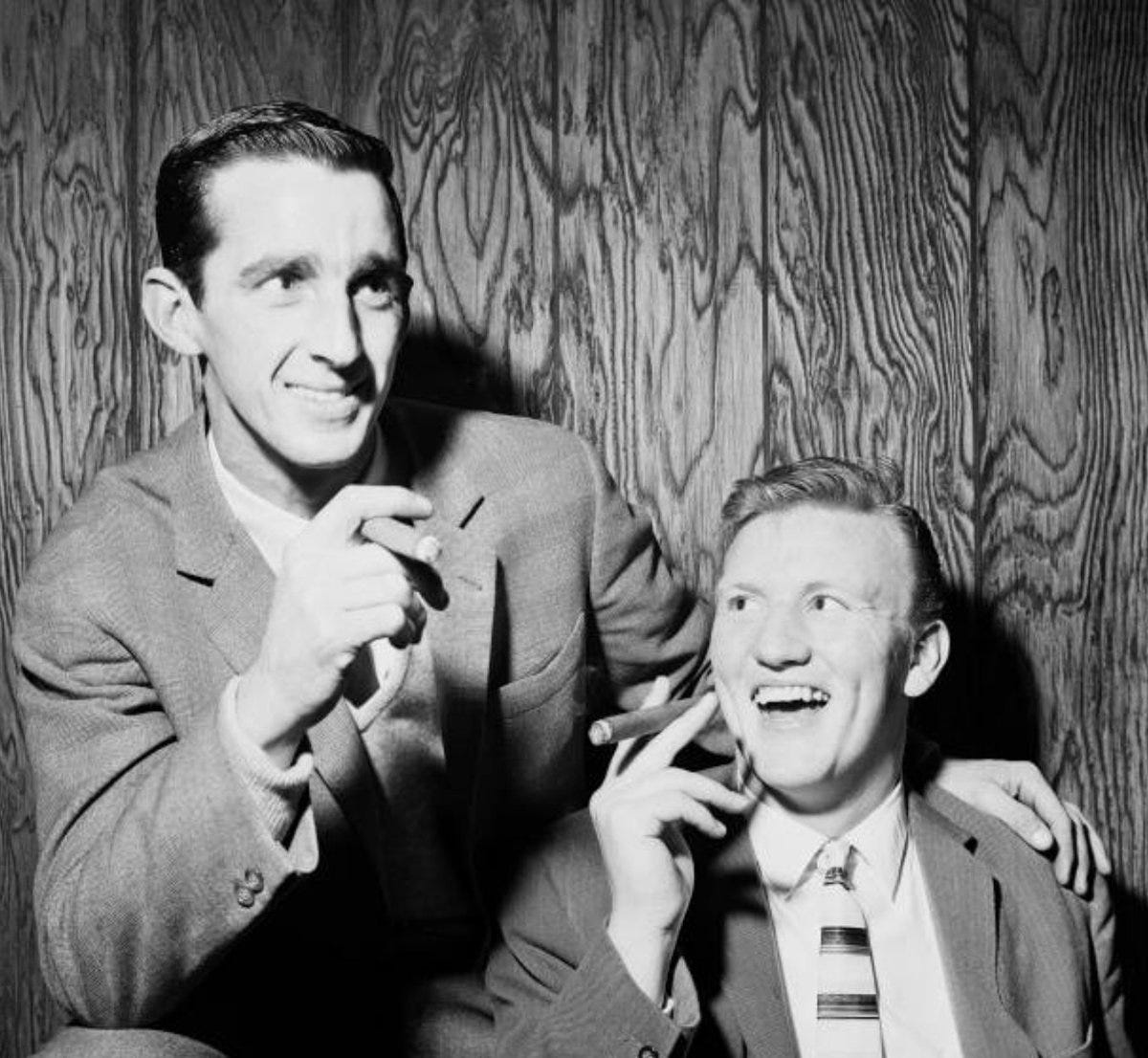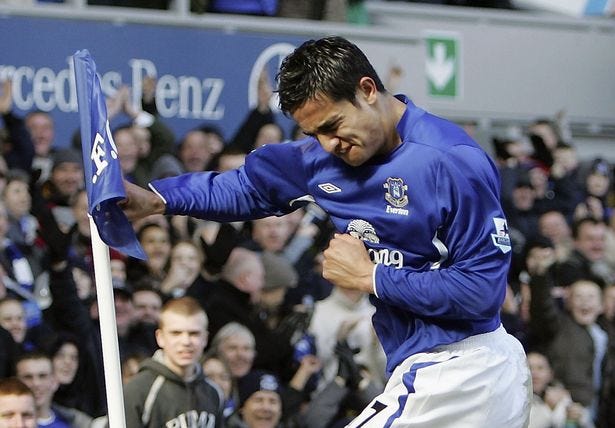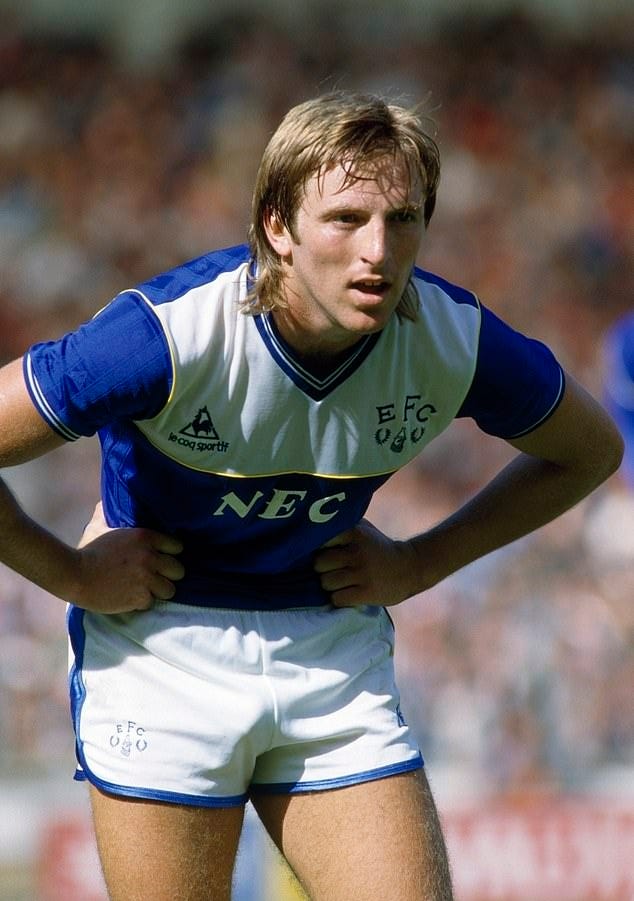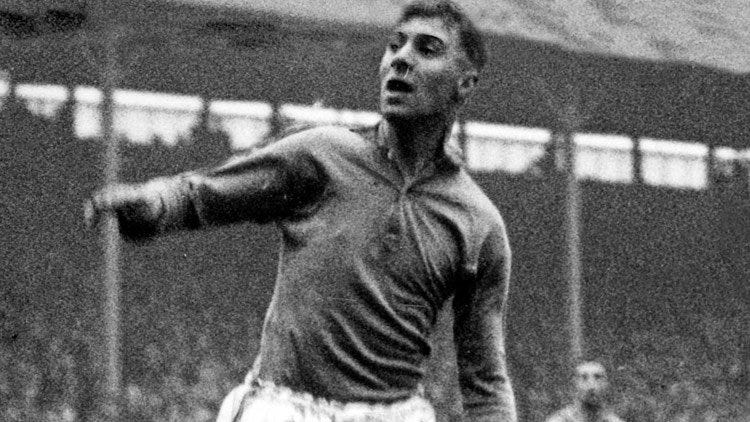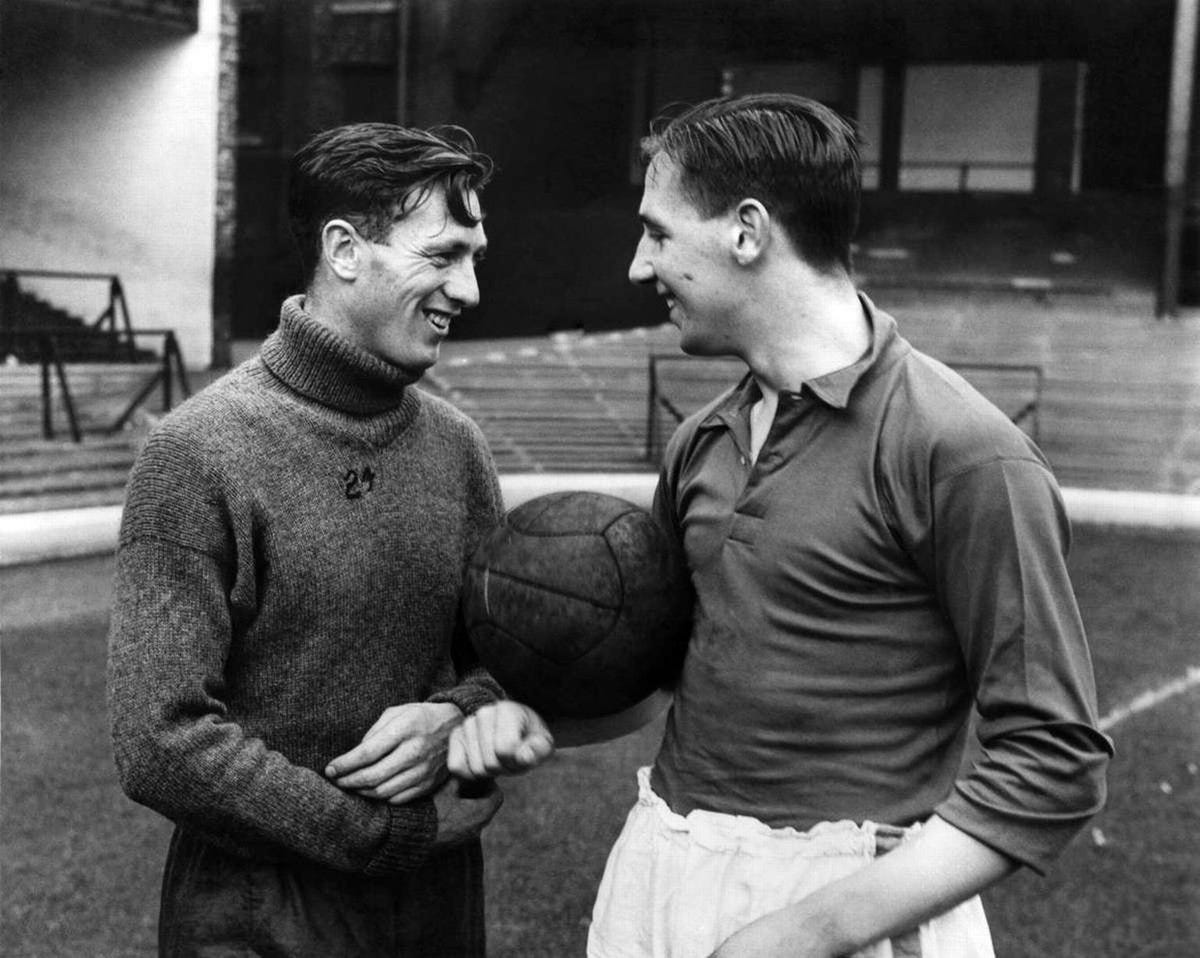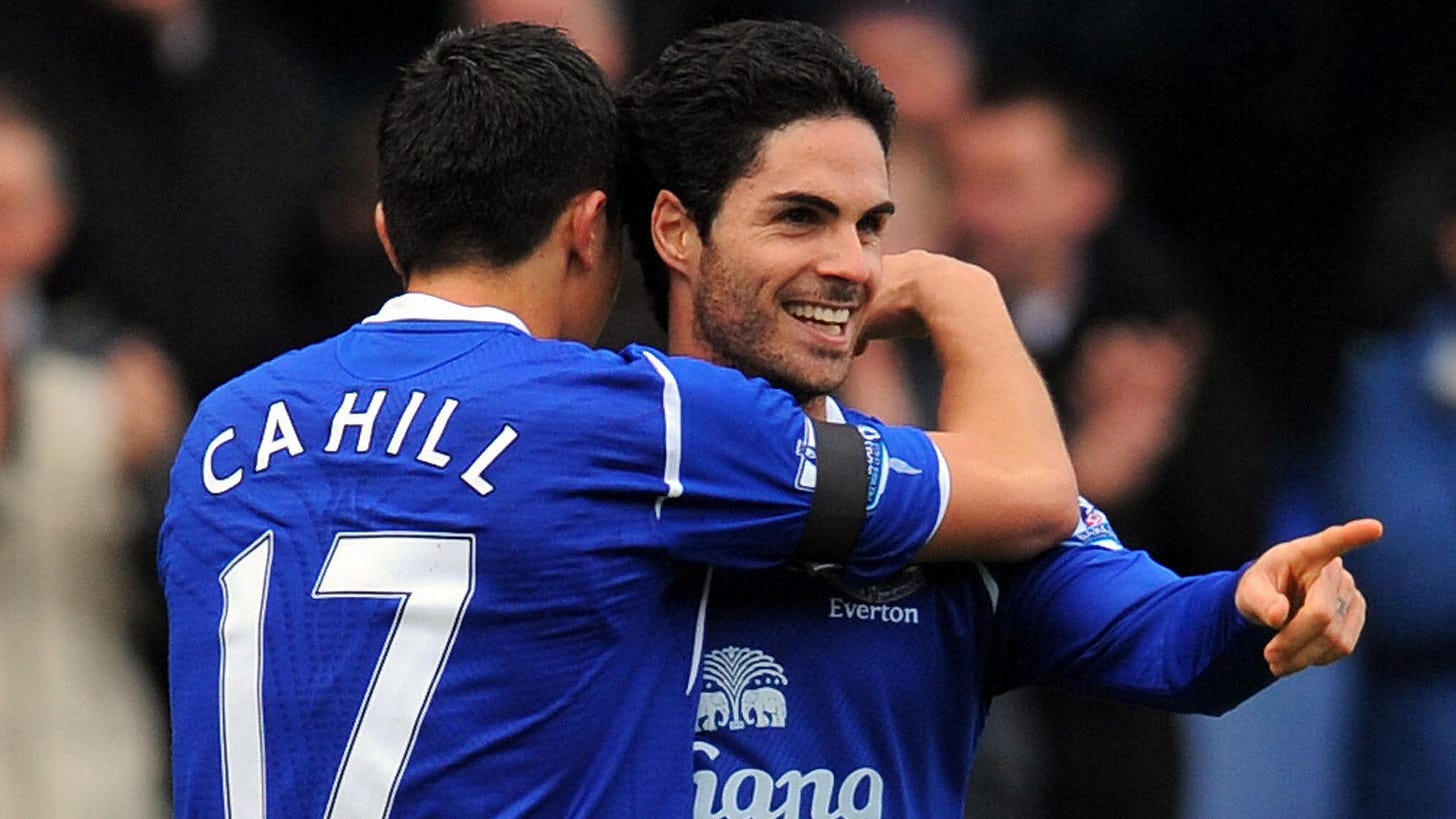The 60 Greatest Everton Players 41-60
The Old Lady has seen some amazing players grace its turf. Our history, and those who have played in royal blue, is something to truly be proud of. Nil Satis Nisi Optimum.
Let’s start with an apology. Sorry for forgetting your favourite player, sorry for mentioning that player you dislike, and sorry for getting those details wrong. It’s not that I didn’t make this list and check it far more than Santa did, it’s just that I’m a lowly blogger without an editor - so mistakes might happen.
Now that the apologies are out of the way, I hope you enjoy this, and come back to see the other truly great Everton legends on this list. - Ed
#60. Tony Kay
1962 - 1964
58 Appearances
4 goals
“Well, I think I was harshly punished. I won only £150 from the bet, but my whole career was destroyed. They took away the game I loved and I have never really recovered from that.” - Tony Kay
Kay was Britain’s most expensive footballer when Everton swooped for him in 1962, paying £60,000 for the red-headed wing half. Harry Catterick, a shrewd judge of talent, clearly had big plans for Kay – plans that sadly never fully blossomed.
He was a quick, skilled, dynamo with a nasty tackle, the Goodison crowd even nicknamed him “Cassius Kay”… That he is instead remembered for becoming embroiled in a betting scandal during his time at Sheffield Wednesday and being banned from football for life is one of Everton’s biggest tragedies. Capped once by England - a game in which he scored a belter - Kay resembles Everton’s major “what if” and the reception he received upon his return to Goodison with other past legends hints at the player he could have been.
A cocky enforcer with an excellent first touch and a brutal shot, Kay was an Orwellian nightmare to play against, popping up all over the pitch dishing out doupleplusungood tackles. Many blues who saw him play say that he’s among the best they’d seen in royal blue…
In our febrile imaginations, where us fans dream of playing for Everton, we’re still only half as good as Tony Kay.
#59. Andy Hinchcliffe
1990 - 1998
227 Appearances
9 Goals

Those corners… What I’d give to have Andy Hinchcliffe taking our corners again. The grumbles that echo around Goodison when our umpteenth corner fails to beat the first man are in part because so many of us have witnessed this man’s dead ball delivery.

David Beckham made his first international appearance in September 1996 against Moldova – Hinchcliffe was in the same side – and although nowhere near as accomplished as Beckham, our left-back was criminally underrated at international level.
Duncan Ferguson almost headed himself to a place on this list, and some of his most memorable goals are due in large part to Hinchcliffe – the architect of many a towering headed goal with his whipped, inswinging corners. At the far post, against Man Utd, curled into the 6 yard box and met with a skyscraping Dunc header in the derby, and against Leeds…
Oh, and Hinchcliffe’s free kicks weren’t bad either…
#58. Alex Parker
1958 - 1965
220 Appearances
5 Goals
“Mrs. Shankly was keen that I got an education, and kept giving me books. I wasn’t really interested, and one day she took me out into the garden for a game of headers. Any heading ability I had in football was gained by learning from Mrs Shankly.” - Alex Parker on his time at Falkirk under Bill Shankly (and his wife.)
Falkirk’s most capped player, Alex Parker joined Everton in 1958 and spent seven seasons with Everton. The right back won a Championship medal in 1962-63 and left the club in September 1965 to join Southport. One of Everton’s best ever right backs, Parker was extremely lively, and made over 200 appearances for the club. Strong, fast, an expert tackler and a swashbuckling attacker, he was also noted for his modesty and self deprecating humour. To this day, people eulogise about Alex Parker’s slide tackles…
The Scotsman notes Parker’s humility in their obituary:
It is fitting that Falkirk fans voted him into their Millennium Team, even though many had never seen him play. Accepting his award, he displayed typical modesty, thanking all the grandfathers who had told their children about him. Modesty was one of his endearing characteristics, and he never failed to amaze with his genuine humility. He classed Tom Finney as his hardest opponent, and recalled meeting him in later life at Preston. “I didn’t recognise him from the front,” he said, “as I usually only saw his back and a number 11 disappearing towards goal, with me left floundering.”
The Independent also made a point of noting his modesty:
He proved a popular landlord of the Swinging Sporran in Runcorn, always ready to yarn about his playing days but invariably referring to his own achievements with characteristic modesty. Later Parker returned to his homeland to live in Gretna and in 2009 he suffered the amputation of his left leg. Still he relished a joke, though, chuckling delightedly when his compatriot and old Goodison chum Alex Young remarked: “At least it’s not the one you tackle with.”
During his time with Everton, Parker won a league championship and a charity shield.
#57. Brian Harris
1955 - 1967
358 Appearances
29 Goals
Even when the Moores money began to buy up some of British football’s best players, the £10 signing kept his place among the “Mersey Millionaires” - Obituary
In 13 years of Everton service Harris was employed in every outfield position but will best be remembered for the fantastic 1966 FA Cup Final victory, a game in which Harris starred and also playfully wore the fallen hat of a policeman during a chase with a rogue fan. To call Harris a utility player doesn’t do him justice, he was a chameleon on the field because he had a thick portfolio of skills; he was an excellent tackler, solid in the air, skilful, and had a fierce shot.
Not bad for a tenner, not bad at all…
#56. Wayne Rooney
2002 - 2004
2017 - 2018
98 Appearances
25 Goals
“He’s the biggest English talent I’ve seen since I arrived in England. We were beaten by a special goal from a very special talent.” – Arsenal Manager Arsene Wenger
“A striker of astonishing precociousness” – Journalist Guy Hodgson
“There is no doubt in my mind. Rooney is no longer just a good prospect – he is already a good player.” – Leeds Manager Terry Venables
“He gave us a glimpse of what he is capable of, which was very exciting for Everton and the whole of English football. Two or three times he really stretched us and he’s only just 17. You’ve got to wonder how good he will be in two or three years’ time.” – West Ham Manager Glenn Roeder
Arsenal seem to have a special relationship with Everton. When Alan Ball left he moved to Highbury. Dixie scored his 60th against them, Arsenal won the title in 1998 by beating us 4-0. Over the years we’ve shared Swedish wingers, foxes in the box, and accident prone keepers. And then there’s Wayne, bagging his first league goal against a hitherto invincible Arsenal.
The sixteen-year-old came on with only the embers of the match remaining, already furious because David Moyes hadn’t played him from the start. It didn’t take him long to turn the game; sending a long range shot that looped over Seaman’s head like a vandal’s brick.
2-1 Everton.
After the goal our young Scouser was bouncing around like a videogame character somehow transplanted into a world of professional footballers. His feet doing what legions of teenagers could only dream of doing with their XBox thumbs.
What most don’t remember is that Rooney came close to scoring a second goal that day. To loop the ball over Seaman’s head once was impressive; to do it twice, and see the ball stray just a pixel too high was amazing. It was AUDACITY with the caps lock on.
I was sat there in the Park End next to my dad, in what – looking back – felt like a Royal box seat for Rooney’s coming-of-age…
And I wasn’t exactly sure what I was witnessing.
Was Wayne going to be another false dawn like Danny Cadamarteri?
The dreadlocked 17-year-old had come into the world of football feet first and hit the ground running, like a precocious young chess champ intent on playing a pickup game with the Grand Masters. But ultimately, Cadamarteri’s goal against Liverpool was the high water mark of his Everton career.
Of course, for our Wayne, it neither began nor ended with his goal against Arsenal. The Rooney phenomenon was already something of an open secret amongst those in-the-know at Goodison, and he went on to score other great goals for Everton, performing an impossibly sharp u-turn at Elland Road whilst leaving Lucas Radebe for dead, as well as a great return goal at Arsenal’s place. Against Bolton he didn’t score, but dominated proceedings to such an extent that stories from that game still bounce around…
The rest of this blue fairy tale remains unwritten; Wayne didn’t go on to drag us into a golden age, instead he left for Old Trafford. He did return, in his dotage, but he wasn’t the same player at all. Rooney is surely the greatest talent to come through Everton’s youth team and deserves his place on this list, and Everton were of course compensated with millions for letting him go, but the Wayne I knew, the bullish street-fighter with the world at his feet? I wouldn’t have swapped him for a wilderness of millions.
#55. Kevin Campbell
1998 - 2005
164 Appearances
51 Goals

‘KC’ was rescued from Turkish side Trabzonspor by Walter Smith, and was a steadying presence for us, scoring 51 times in 139 starts and grabbing Everton by the collar just as we were about to leap off the precipice.
Campbell’s goals, especially the crucial net bulgers at the end of 1998-99 season, when he scored 9 goals in eight games, kept us afloat. He’s also the last Evertonian to score a winner at Anfield… The partnership that Campbell forged with the young Franny Jeffers was so successful that Wenger spent £8 million on Jeffers, who never lived up to his promise.
Many of the stars that sit in this list carry their medals as a mark of their success, Campbell’s success is bigger than that – his proud legacy is of keeping us in the Premier League.
#54. Phil Jagielka
2007 - 2019
322 Appearances
14 Goals
”He cares for this club like no-one else.” - Roberto Martinez
He caught the eye of Arsene Wenger, pissed off Neil Warnock, was Wayne Rooney’s boozy wing-man, has played over 300 times for us and is the only Everton player to captain England.
When David Moyes bought him for four million in 1997 we were signing a Swiss Army knife. A player who could play multiple defensive positions, and at a pinch, even goalie. In fact, Jags was so accomplished between the sticks that Neil Warnock enjoyed the luxury of not having to bother naming a reserve goalkeeper on the bench.
What we got was far than that: solid, fast, dependable, Jagielka was fantastic for us from the moment he signed. The partnership he forged with Joleon Lescott was arguably the best in the Premier League and Tim Howard’s praise for his teammate after a particularly heroic display against QPR in 2012 describes him perfectly:
Jags was immense. He’s grown and grown and looks like he’ll cement himself in the England team playing like that.
He’s been doing that for us for years. He’s a player who does his own job and at the risk of making a mistake he’ll try and cover for everyone else on the field too. He’s a leader, he’s solid, and he was an animal against QPR.
It was a classic centre-half performance - he was everywhere. It was just one of those nights you knew he wasn’t going to get beaten. He’s been a rock for us for a long time and we need him to have the momentum going into the derby.
Countless performances like the one mentioned above, solidity, leadership, and that cracker against Liverpool - stealing a draw at Anfield from the gaping jaws of defeat with a ridiculous half volley from miles out… Phil Jagielka eventually left Everton in 2019. Let’s promise we’ll never forget him.
#53. Martin Dobson
1974 - 1979
230 Appearances
40 Goals
“I think you learn more from failure than you do from success. I was and I was totally devastated. You just got a letter in those days – ‘Thank you, you’re crap, goodbye’” – Dobson on being rejected by Bolton as a youngster.
Bolton Wanderers must still be kicking themselves…
“Sir Dobbo” was a tall, gracile midfield player with excellent technique who was bought from Burnley by Billy Bingham in 1974, for a record British transfer fee.
The £300,000 that Everton spent on Dobson (which is what some players now earn in a week) provoked questions about whether money was beginning to rule the sport, questions which have never stopped and only get louder with every passing year.
Dobson had excellent close control which aided his wonderful shooting and passing, and when he was in possession of the ball he was neither hurried nor wasteful. He went on to win five caps for England under three different managers; Sir Alf Ramsey, Joe Mercer, and Don Revie.
#52. Jimmy Gabriel
1959 - 1967
303 Appearances
37 Goals
“Everton is in your blood – that’s what happens when you play for them.” - Jimmy Gabriel
No matter the player, there is always one episode in their career that will rise above the rest and become their sporting epitaph. For Jimmy Gabriel, his lapidary moment was playing for time in the corner flag, helping to chip away at the final seconds in our remarkable 1966 FA Cup Final comeback against Sheffield Wednesday.
Between 1960 and 1967, Jimmy played over 300 games for Everton and won League and FA Cup medals with us. A defensively minded player, he was bought for a hefty £30,000, becoming Scotland’s most expensive export south of the border. The fact that Gabriel only won two Scottish caps isn’t a reflection on his lack of talent, rather the huge choice of half-backs available to Scotland at the time. Gabriel was a player who managed to carefully tread the line between physicality and skill; he was able to both break up play and distribute the ball too. Manfully, Jimmy twice took on the role of caretaker manager at Everton, and both times he stepped up during a bleak nadir.
There’s a corner of Wembley that will forever be Jimmy Gabriel’s

#51. Tony Cottee
1988 - 1994
241 Appearances
99 Goals
Cottee hated being a substitute and he never warmed up in advance unless he knew he was coming on. That opportunity arrived with just 13 minutes left to play. “Howard put his arm around me and said, ‘Go on and get us a goal’.” Cottee looked at the electric scoreboard in the south-eastern corner of the ground. “I thought to myself, ‘What the fuck am I going to do with so little time left?’.” - Tony Cottee’s interview with the Athletic
A British record signing when Colin Harvey bought him from West Ham in 1988 – TC scored a hat trick on his debut, bagging the first after a mere 34 seconds. As an attempt to replace the irreplaceable – goalscorers like Gary Lineker, Andy Gray and Graeme Sharp – Cottee has always been underrated. Even though he scored 72 goals for the Toffees he is still – somewhat unfairly – looked down on. Cottee was a quick, off-the-shoulder striker similar to Michael Owen, and a true supersub in the 1991 4-4 draw at Goodison.


#50. Tim Cahill
2004 - 2012
226 Appearances
56 Goals
“The only way you can upset a crowd, especially at Anfield, is by scoring. It’s the best feeling ever. Anfield, Goodison Park, the derbies, it’s all about fire.” - Tim Cahill
Strong and unbelievably dominant in the air for someone who is only 5ft 10in, Cahill had an unreal knack for goalscoring.
The Australian was the competitive heart of Moyes’ side, and is Everton’s post-war top scorer in Merseyside derbies. Whether he is scoring and then trotting of to box the corner flag, leaping into the stands to sign autographs on foreign tours, or mussing the hair of young and wide-eyed fans, he is always doing it for Everton.
Cahill’s late equaliser against Chelsea at Stamford Bridge was a personal favourite. For a sweet second the Aussie was the same way up as his countrymen with brilliantly executed bicycle kick.

Evertonians love Cahill and you get the impression that the feeling is very much mutual.
No. Sorry.
What I’ve just typed isn’t enough. I still haven’t captured quite how important he was for us. Perhaps a Dixie’s 60 match report from 2010 will do the trick:
EVERTON 2 (Cahill 34, Arteta 50) – LIVERPOOL 0
Tim Cahill is 30 years old. Many players peak sooner, some, usually defenders and keepers peak later, but the Australian has reached the apex of his playing career and is currently a fearsome combination of physical strength and footballing craft.
Gorge your eyes on him, tell yourself to remember, remember, remember.
Those of us lucky enough to have seen Alan Ball in his pomp always regret we did not see more of him, make not the same mistake with Tim Cahill. In years to come people will ask “what was he like?”
On Sunday this player passed two landmarks, one mathematical the other mythical: His 34th minute strike was his fifth league derby goal, a post war record for a Blue, but it was his overall match performance, along with thirty or forty of equal intensity in recent years, that finally took him through the shimmering veil which separates the merely good, from the truly great. Though nominally operating in his accustomed role, playing just off the lone striker, Cahill was everywhere; at one moment auxiliary defender, the next supporting Arteta in midfield and then popping up to harass and to penetrate the Liverpool rearguard. It was all that we have come to expect from the Aussie, a performance of passion, intelligence and leadership.
Everton dominated from the start. Within eleven seconds a revitalized Yakubu flattened Krygiakos, inside ten minutes Carragher was barking a rebuke at Torres who angrily gesticulated in response, and just after the half-hour mark Everton were ahead.
The excellent Seamus Coleman beat Lucas and Konchesky and crossed for Cahill to instantly crash the ball into the net and the Toffees had the lead their play warranted. Distin and Jagielka were solid and dominant, Arteta was running the game and Osman was tackling, harrying and working so hard that the absence of Pienaar went unnoticed. Appropriately it was Arteta, scoring his first derby goal, who delivered the coup de grace shortly after the break. Kyrgiakos was first to a Baines corner but his header only found the Basque on the edge of the area – Arteta controlled the dropping ball before lashing a powerful swerving shot past Reina into the Park End goal.
To be sure from this point the Reds dominated possession, but carved out only one clear-cut chance, when the superb Sylvain Distin just managed to get to a through ball ahead of Ngog and block it away for a corner. During our slow start to the season some of the manager’s substitutions have been widely criticised, but his decision in the seventy fourth minute to send on Jermaine Beckford for the injured Arteta and go to 4-4-2 was spot on; Beckford saw plenty of the ball, pressurized the Liverpool back four and, if he had been a little more composed when clear through, might have added a third as the Reds pushed forward.
Everton’s season is now finally under way, but there is ground to be made up. Fellaini faces a lengthy layoff, but Rodwell, Pienaar and Saha will soon be ready to rejoin the fray. Yakubu is back, almost reborn; he looked strong as well as physically and mentally sharp, the goals will come. Next Saturday Spurs better be on their guard, they have a tough game in prospect.
LIVERPOOL (4-2-3-1): Reina; Carragher, Skrtel, Kyrgiakos, Konchesky; Meireles, Lucas (Ngog 71); Maxi (Jovanovic 84), Gerrard ©, Cole (Babel 79): Torres
/Subs not used: Jones, Aurelio, Spearing, Kelly
/EVERTON (4-4-1-1): Howard; Neville ©, Jagielka, Distin, Baines; Heitinga (Hibbert 72), Coleman, Arteta (Beckford 74), Osman (Bilyaletdinov 46); Cahill; Yakubu
Subs not used: Mucha, Gueye, Baxter, Mustafi
Referee: Howard Webb
Gate: 39,673
#49. John Hurst
1965 - 1976
402 Appearances
34 Goals

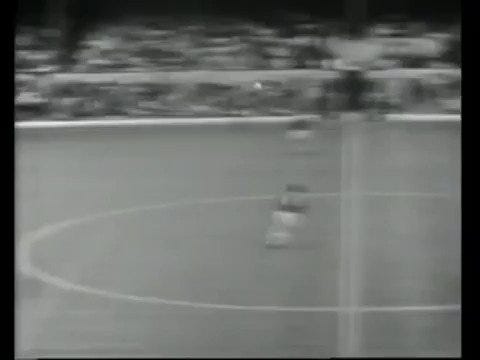
A product of Everton’s youth system, Hurst was a key member of the 1970 league championship-winning side, playing at the heart of the defence alongside Brian Labone. An imposing and skilful player, Hurst has been somewhat neglected by the historians but his contribution is not forgotten by this admirer. Confusingly for those less flexible times he wore the No 10 shirt. Legend had it at the time that this allowed the goal-shy Colin Harvey to wear the No 6 shirt thus lifting psychological pressure from the attacking midfielder’s shoulders. Given Harry Catterick’s man-management skills, this is not as outlandish an explanation as might be imagined…
#48. Andy King
1975 - 1980
1982 - 1984
248 Appearances
67 Goals
An effervescent and skillful attacking force, Andy King first came to Goodison in 1976 as a £35,000 signing from Luton Town. None of his 68 net bulgers were more memorable than his volleyed goal against the old enemy in October 1978, which has gone down in Goodison lore.
Afterwards, this game was to be known simply as “the Andy King Derby”. For Everton, it was a cathartic end to a terrible run of results against their local rivals…
Liverpool strutted into this match on top of the league and unbeaten in the derby since November 1971. Andy King changed all this; brilliantly ending the red dominance and seven years of hurt with a scorching 20-yard volley beyond a helpless Ray Clemence.
The 1-0 victory and King’s fantastic goal were greeted with wild celebrations, with an officious policeman bundling our hero away before he could talk to an eager reporter. Sadly, instead of sparking a challenge for the title, Everton hovered in second place before dropping to fourth in the league.
King had exquisite technique and a huge heart, and the only regret from Evertonians is that he didn’t truly fulfill his massive potential.
#47. Derek Temple
1956 - 1968
275 Appearances
83 Goals

“I never fail to hold my breath and pray that Derek Temple will hit the target for the winning goal. He never disappoints.” - Dr. David France, OBE
Derek ‘Shirley’ Temple, a pacy and versatile player, scored the third miraculous goal in Everton’s famous 1966 Cup Final comeback against Sheffield Wednesday, a cool finish in a cauldron of pressure.
In Dr. France’s magnum opus, Everton Crazy, he asks our hero about that goal, Temple replies,
“If I had been Alex Young I would have dribbled up to the keeper before waltzing around him, nut-megging him and back-heeling the ball into the net. My practical alternatives were to chip the keeper or to blast the ball past him. I noticed that Springett had advanced from his line and decided to try my luck from the edge of the box. I knew exactly where I was going to hit the ball. Fortunately, the ball behaved itself.”
Temple’s quick-witted two-footed wing play even won the attention of Alf Ramsey, earning him one England cap in 1965. Thank you Derek, for that famous goal and answering Dr. France’s - and thousands of other Evertonians - prayers.
#46. Gary Stevens
1982 - 1988
293 Appearances
13 Goals
Pace.
It was all about pace for Stevens, pace that covered (small) cracks in his game, pace that gave him two (even three) opportunities to tackle, pace that allowed him to get to a loose ball first in the ’84 cup final and set up Graeme Sharp…
Undoubtedly one of the best graduates of the Everton youth team, initially Howard Kendall brought Stevens into the side as a midfielder, but soon he had supplanted Brian Borrows at right back, who was eventually sold in 1983.
Even better than Bainaar was Steven(s)…
Such was his symbiotic relationship with the man who played in front of him that Gary Stevens and Trevor Steven effectively came as a pair. After Everton, they continued to play together at Glasgow Rangers…
Stevens won two league titles, four Charity Shields, and FA Cup and a Cup Winners Cup with Everton…
#45. Richarlison
2018 - 2022
135 Appearances
43 Goals
“Richarlison was a fantastic talent before me, and will be a fantastic talent after me. He has skills and ability… power and strength and speed. He is really the complete striker.'' - Carlo Ancelotti
He promised us.
He promised that he wouldn’t let us get relegated.
Not on his watch would we drop down a division.
He did just that.
Last season we projected all of our angst onto our Brazilian, and he stood up when it mattered, a skyscraper amongst bungalows, sadly now sold to Spurs,
I loved how, when he was back there, Richarlison was often our best defender.
I also loved Richarlison's reptilian football brain. He wants to play, and when he was younger he’d cry when subbed off. He wants to score, and when a penalty is awarded he’s first to grab the ball and never let go. He wants to win, and unfortunately that took him elsewhere. It's a double-edged sword sometimes, but I wouldn't have changed him for the world.
It’s interesting, too, to look back at the utter bedlam that came when we signed him. We’d ruined the transfer window, we’d spent far too much money on him, pundits lined up to have a pop, including Barry Glendenning and Julien Laurens below…

Everton haven’t replaced Richarlison, this is true. What’s also true is that replacing Brazil’s first choice striker might be a tad tough. Richarlison with his Roman nose, Brazilian feet, chip on both shoulders, and a SKYSCRAPING forehead, sits proudly and deservedly on this list.
#44. Cliff Britton
1930 - 1939
242 Appearances
3 Goals
Everton signed Britton in 1930 from Bristol Rovers. Three years later the talented midfielder had won the FA Cup and was later to be recognized by England, winning nine caps in all. Britton provided much ammunition for Bill Dean, who would later claim that his crosses were the best he had ever received.
For more detail, Everton’s great historian aand writer Rob Sawyer provides a great window into Cliff Britton here.
#43. Joe Mercer OBE
1932 - 1947
184 Appearances
2 Goals
A league title winner at Goodison in 1938-39, Ellesmere Port born Mercer was an excellent left half and an England legend. Everton got four seasons out of him before the war. As with many players of his generation the war ‘stole’ what would have been his best years. He moved to Arsenal for £9,000 in 1946, though he continued to commute from Merseyside. Mercer’s fierce tackling and marauding runs were to be missed. His long and distinguished managerial career included spells at Sheffield Utd., Villa, Manchester City and as the care-taker England boss.
#42. Mikel Arteta
2005 - 2011
162 Appearances
27 Goals
“On the field, his talent often reminds me of The Golden Vision and off the field he has qualities similar to Alex The Great. You could say he is our La visión de Oro.” - Bill Kenwright
“That was probably the best performance in my time here. Some of our football was fantastic and our passing and movement was just outstanding. It is how I have been hoping to get an Everton team playing and I hope we see Everton playing that was more often – hopefully it’s the first of many. Mikel Arteta’s first 45 minutes was nothing short of magical. The things he did on the ball and the opportunities he created for us were just something else.” - David Moyes, post match, Everton 7-1 Sunderland. November 24, 2007
Our midfield laureate, Arteta had fantastic feet and a sharp footballing brain. Ostensibly brought in as Thomas Gravesen’s replacement – Arteta went on to outshine the Dane. No diver, Arteta was instead equipped with the fleet-footed skill and innate sonar to pick up countless fouls against him.
After his knee injury, we got a different player. If anything he seemed an even more cerebral player, soaking up possession, always looking to play balls on the deck – and rarely dribbling as much as he used to. It shouldn’t have come as a surprise that Arteta, with his plastic Ken-doll hair and glorious portfolio of passes, attracted the attention of Arsene Wenger.
When he did eventually leave Everton for Arsenal we all gave into temptation.
Temptation to paint him as the bad guy. Temptation to roar wildly when he scored an own goal for Arsenal. Lots of this vitriol stemmed from his apparent “disloyalty” to Everton when he scored a penalty against us.
“Oh he’s changed,” people said. Whereas Arteta was a beatific blue choir boy on the pitch, at Arsenal he faked injuries, hen pecked the ref, and - horror of horrors, clutched his new team’s badge with pride, the sure fire sign of a changed man.
But a lot of blues were very wrong that day. Arteta had every right to celebrate. This wasn’t Denis Law, an emotionless husk after scoring against Utd. Equally, it wasn’t exactly Emmanuel Adebayor charging most of the length of the pitch to taunt his former fans, a man who so often threatened to collapse under the weight of his own twattery.
In fact, Arteta didn’t celebrate.
After he scored the penalty against us his joy was muted, in keeping with this new and idiotic fad of not celebrating goals against former flames. It was only after the ref called him back to retake the spot kick that his celebrating was more boisterous. Clearly emotions were bubbling over after having to take two penalties and he was extremely relieved to have scored twice. To miss the retake would be in keeping with the spineless Arsenal narrative. Dashing Champagne from their own lips, the kind of drooling cowards that can only be trusted to dine with blunt cutlery for fear of cutting themselves…
THAT’S why Arteta was so excited and happy, because he’d scored twice NOT because the goal was against us.
Does his behaviour in that game completely outweigh everything he did for us and tip the balance towards being a git?
No, clearly it doesn’t.
Let’s celebrate the player Mikel was for us, the best little Spaniard we’ve ever known.
#41. Jack Sharp
1899 - 1910
342 Appearances
76 Goals
Signed from Aston Villa in 1899, he was a short, stocky man described by one writer of the day as a “Pocket Hercules.” - Everton FC
Born in Hereford in 1878 Sharp was a lightning-fast and exciting outside right who represented England at cricket and football, he played 342 games for Everton and went on to be a director at Goodison. Jack bagged three league championship runners-up medals, one FA Cup runners up medal and lifted the FA Cup in 1906 when Everton beat Newcastle United 1-0 at Crystal Palace. A superb cricketer, he hit 38 hundreds for his beloved Lancashire and, in 1909, also managed to crowbar three Test matches against Australia into his career, scoring 105 at the Oval.
Immortalised in countless cigarette cards, stocky, fast, and talented in two sports, Jack Sharp is a true legend.

